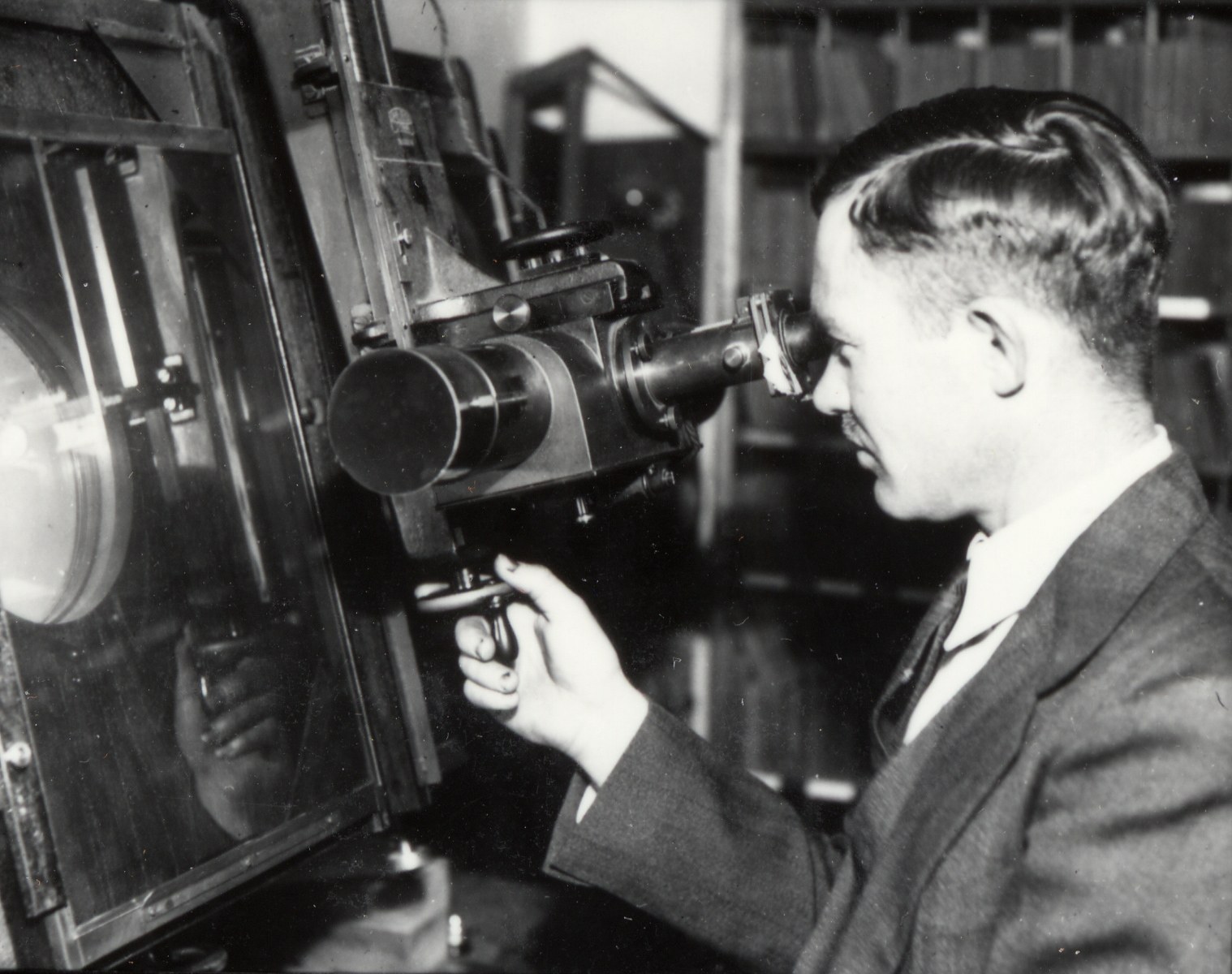American planetary discovery' with German technology
American planetary discovery' with German technology
In 1930 Clyde Tombaugh, like many astronomers, used a blink comparator from the Carl Zeiss company in Jena to search for new objects in the solar system. It works on the principle that two glass photo plates of the same star field, exposed at different times of the night, are viewed alternately in rapid succession through an eyepiece - first the left photo plate, then the right one, and so on. Objects with a slight change in position seem to jump conspicuously back and forth. This is how Tombaugh was able to discover the point of light of the sought-after planet X, which made him famous, wandering in front of the fixed starry background.

